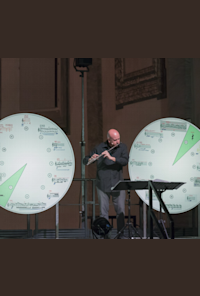

Kathinkas Gesang Als Luzifers Requiem
공유하다
Kathinkas Gesang Als Luzifers Requiem by Xenakis, Scelsi, Stockhausen, 에서 (2019/2019), 지휘자 Antonio Caggiano, San Giacomo Apostolo(Chiesa Di San Giacomo), Forli, Italy
직장 선택Psappha, Xenakis
Conductor
앙상블
오케스트라
CPChigiana Percussion Ensemble
작곡가에 대해 자세히 알아보기
음악 작업에 대해 자세히 알아보기
